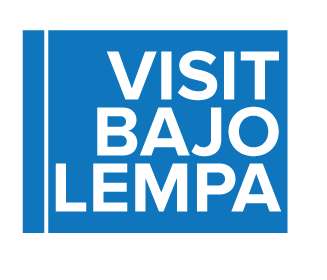some answers to commonly asked questions
How long have we been doing this?
Our relationship with the people of El Salvador began in 2006. For the full story, see our history page.
Is it safe?
We travel to Rancho Grande, El Salvador, which is roughly one hour outside the capitol San Salvador. While San Salvador is a flourishing city, Rancho Grande (literally “big farm”) is a rural community. They have dirt roads and dirt floors in their homes. Rancho Grande has two two-room schoolhouses, a small corner store, a community center, and no traffic other than the cows walking to and from the fields.
While you may think of El Salvador as an unsafe country, we can assure you that Rancho Grande is safer than downtown Manlius. Safety is our number one priority while we are there, and we want the parents of our high school volunteers to be completely comfortable with sending their students. During our first scouting trip in May 2006 we brought along the mother of a 9th grade student. If she had decided the community seemed unsafe, we may have changed our minds about the whole thing. But she said that it was entirely safe, and she would have no problem sending her own daughter.
While in Rancho Grande we have never experienced any signs or gestures of violence. We fly in and out of the San Salvador airport, however, and we do see guards with guns there. This is just for security. We have never had a problem, and we don’t expect we will. The airport employees are often nicer than the ones in NYC!
What are the health risks?
We will hand out a very detailed packet of medical advice once we start participant meetings, but here are some of the highlighted points:
Up-to-date vaccinations required: Flu, Tetanus, Hepatitis B
Traveller’s diarrhea is a possibility whenever we leave our hometown. To minimize the risk of this, we only drink bottled water and water from the two wells we’ve built there. The wells are tested for unhealthy bacteria yearly and are determined to be 100% safe. They have been the main water source for our trips for the past five years.
Mosquitos, dengue and malaria: In February the risk for dengue and malaria are very low. However, to best protect yourself, use insect repellent with DEET.
What wildlife do we encounter?
Scorpions are known to be around during our stay in Rancho Grande. We take great care to wrap up our belongings every morning to ensure they don’t find their way into our things. If someone does get stung, our doctor tends to the sting, and they are back to 100% within a few hours.
There are also occasional iguanas about town, but we rarely see them. Stray cats and dogs are also around, we just have to remember they aren’t like our pets back home, and we must be cautious about interacting with them.
Other than that, just the typical friendly farm animals: cows, chickens, horses, etc!
Where do we sleep?
The males sleep in the school, and the females sleep in the community center. Each building has a fence enclosing it.
What do we eat?
We cannot know how the native food will affect us, so we bring in food from the city that we know is safe for us to eat. We do our best to meet any special dietary needs.
What do we do?
Eat, sleep, work, and grow in community. For some of our goals and how we work towards them, check out this page.
What are the costs (2024 Trip)?
We are asking that the participants make a goal to raise $1,150 plus the cost of travel for the trip. (These were figures for our 2024 trip, 2025 details will be updated here)Here is an estimated breakdown:
Transportation to and from (plane, bus): $600-$1000 - not fixed and not included in the $1,150 - exact cost for transportation will come as we get closer to purchasing tickets
In country costs (food, transportation and lodging): $350
Projects: $300
YL El Salvador: $300
Other Misc. Costs** (staff, service fees, materials): $200
**Any leftover funds not spend on these expenses will be given to El Salvador
We ask that you make an effort to fundraise the money, to experience a community of support as you prepare for the trip. Any “extra” money will go into our long term project funds (wells, schools, boats, scholarships, etc), and will continue to bless these people over the next few years as we put different projects in place. We ask everyone to raise as much as they can. If cost is an issue, please talk to one of us. We do not want to exclude anyone!
How do we communicate from here on out?
For a trip this large with so many details, we utilize electronic communication. Upon learning that you are participating with this trip, you must complete the online form that will be emailed to you. On rare occasions, our group emails end up in SPAM (especially for those with twcny.rr.com accounts). For gmail accounts, these messages sometimes end up in the PROMOTIONS tab. Messages will come out roughly every 2 weeks. At the same time, we will be regularly updating this website, so check back for more information.









